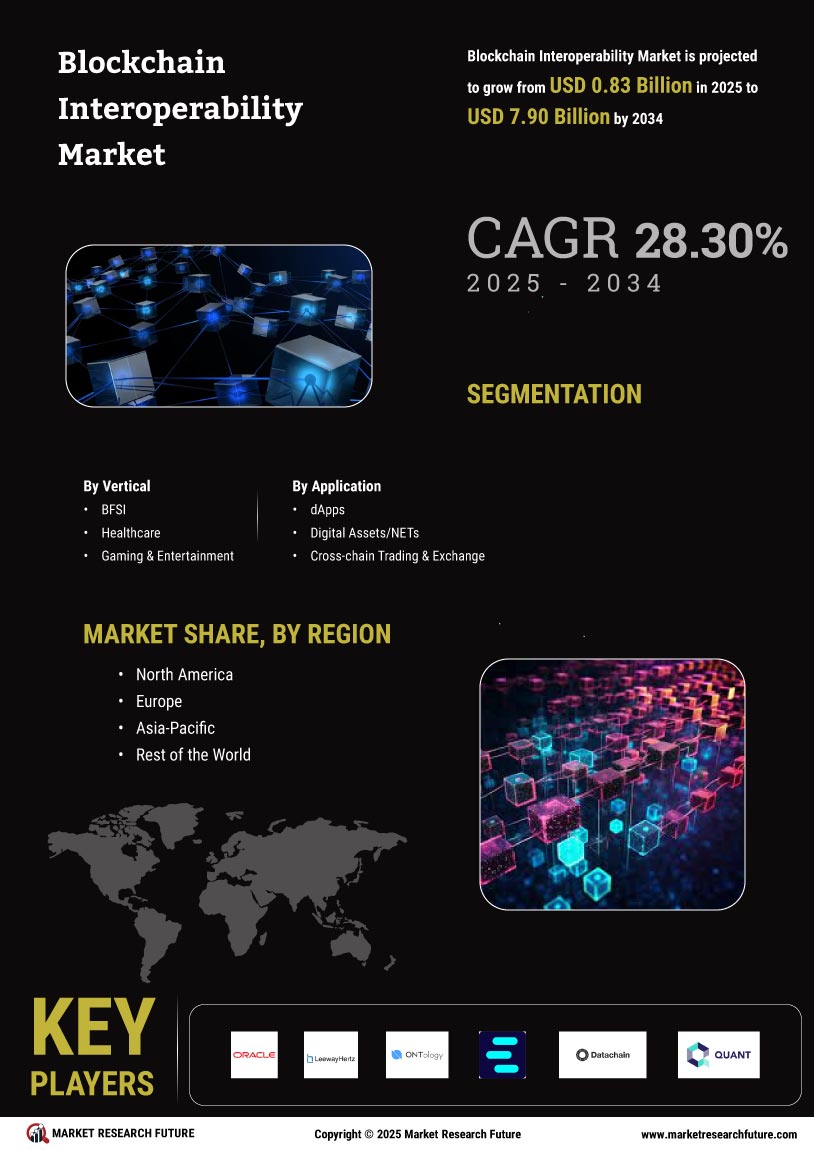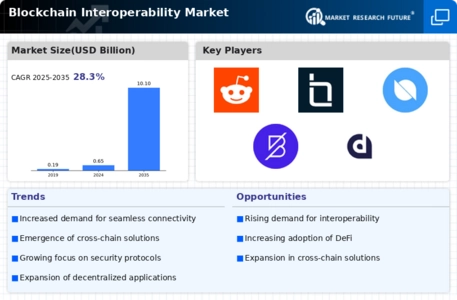The Blockchain Interoperability Market is currently characterized by a dynamic competitive landscape, driven by the increasing demand for seamless communication between disparate blockchain networks. Key players such as Polkadot (PL), Cosmos (US), and Chainlink (US) are at the forefront, each adopting distinct strategies to enhance their market positioning. Polkadot (PL) focuses on its unique parachain architecture, which allows multiple blockchains to interoperate, thereby fostering innovation and scalability. Meanwhile, Cosmos (US) emphasizes its modular framework, enabling developers to create custom blockchains that can easily connect with others, thus promoting a decentralized ecosystem. Chainlink (US), on the other hand, is leveraging its oracle technology to facilitate real-world data integration across various blockchains, which is crucial for the functionality of decentralized applications. Collectively, these strategies not only enhance their competitive edge but also contribute to a more interconnected blockchain ecosystem.
In terms of business tactics, companies are increasingly localizing their operations and optimizing supply chains to enhance efficiency and responsiveness to market demands. The Blockchain Interoperability Market appears moderately fragmented, with a mix of established players and emerging startups. This structure allows for a diverse range of solutions and innovations, although the influence of key players like Polkadot (PL) and Chainlink (US) is substantial, often setting industry standards that others follow.
In August 2025, Polkadot (PL) announced a strategic partnership with a leading financial institution to develop cross-chain DeFi solutions. This collaboration is expected to enhance liquidity and accessibility for users, thereby solidifying Polkadot's position as a leader in the interoperability space. The partnership not only showcases Polkadot's commitment to innovation but also highlights the growing interest from traditional finance in blockchain technology.
In September 2025, Cosmos (US) launched a new initiative aimed at enhancing interoperability between its blockchains and Ethereum (US). This initiative is significant as it opens up new avenues for developers and users, allowing for greater flexibility and functionality across platforms. By fostering such connections, Cosmos (US) is likely to attract more projects to its ecosystem, further strengthening its market presence.
In October 2025, Chainlink (US) unveiled a new protocol designed to improve data accuracy and reliability for decentralized applications. This move is particularly important as it addresses one of the critical challenges in the blockchain space—data integrity. By enhancing the trustworthiness of data feeds, Chainlink (US) is positioning itself as an indispensable player in the interoperability market, potentially driving wider adoption of its solutions.
As of October 2025, the competitive trends in the Blockchain Interoperability Market are increasingly defined by digitalization, sustainability, and the integration of artificial intelligence. Strategic alliances are becoming more prevalent, as companies recognize the value of collaboration in driving innovation and expanding their reach. Looking ahead, it seems that competitive differentiation will increasingly hinge on technological advancements and the ability to provide reliable, innovative solutions rather than merely competing on price. This shift underscores the importance of adaptability and forward-thinking strategies in navigating the evolving landscape.















